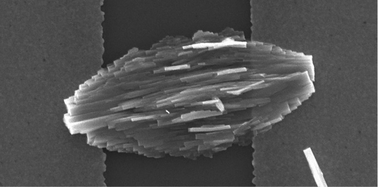ZnO nanoleaves with superior photodetection properties
Abstract
Controlled multiphase hydrothermal synthesis technique was developed to design and grow hierarchical zinc oxide (ZnO) nanostructures with high surface-to-volume ratio. ZnO nanoleaves (ZNLs) and nanoflakes (ZNFs) assembled from initial monomorphological nanostructures, ZnO nanowires (ZNWs), and ZnO nanodiscs (ZNDs), respectively. These hierarchical nanostructures with 2D nanosheets building blocks were obtained by sequential nucleation and growth following a hydrothermal process. Zinc sulphate was the source of zinc ions in the second growth phase. In comparison to their monomorphological counterparts, the hierarchically designed ZnO nanostructures demonstrated superior ultraviolet detection properties, an improved photosensitivity (∼105), and fast response-time (5 s) and fast recovery-time (1 s). The enhancement in photosensitivity of the ZNLs photodetector was ascribed to the reduced dimensions and increased surface-to-volume ratio. This work is part of the efforts leading the way toward low cost, large scale, and low temperature fabrication of high performance nanostructured ZnO PDs on flexible and transparent substrates.

- This article is part of the themed collection: Popular Advances


 Please wait while we load your content...
Please wait while we load your content...